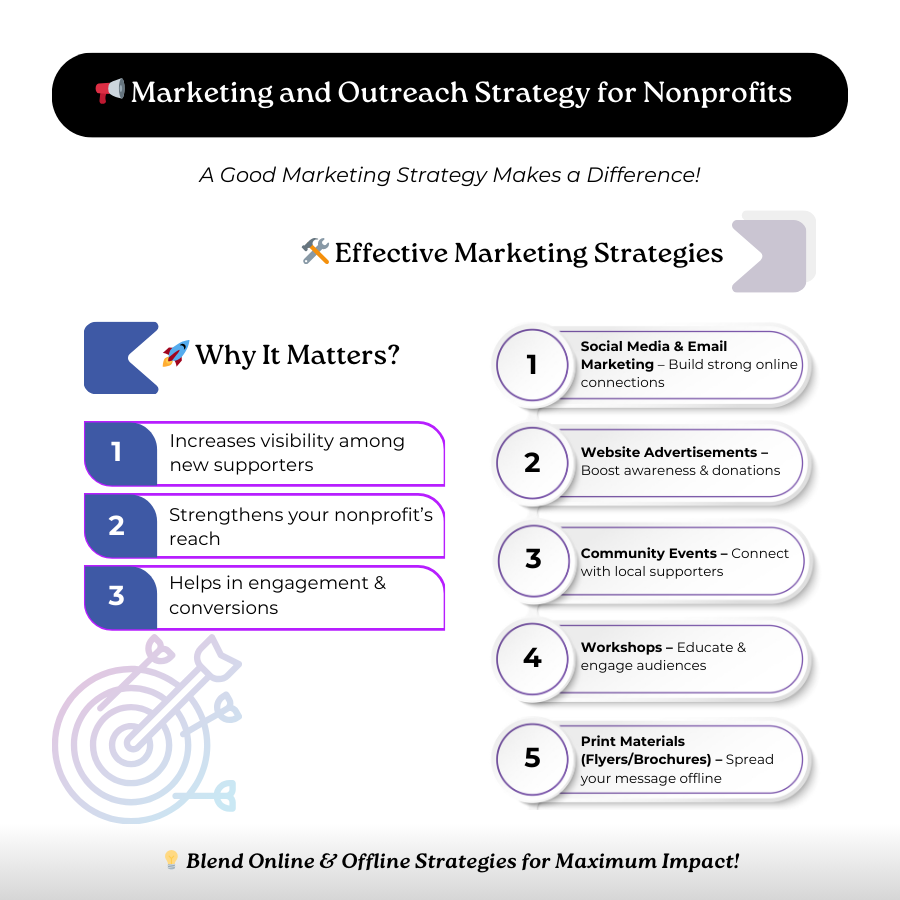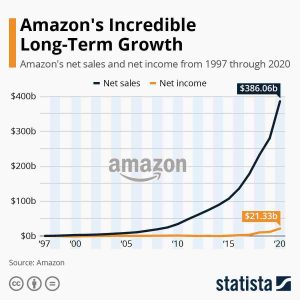How to Write a Nonprofit Business Plan
Introduction
A nonprofit business plan is an essential document in the management of an organization working to fulfill a social mission. Unlike profitable entities, nonprofit organizations focus much on creating positive effects in society rather than making profit. Here are some of the reasons why a non profit business plan is essential:
- A good nonprofit business plan format is the roadmap that guides the activities of your nonprofit.
- It ensures the understanding of the objective while keeping the financial status in order.
- It provides direction and serves to clarify the mission of the organization to your stakeholders, including donors, partners, and community.
- It also offers you quantitative measures of success or failure and helps in adjusting the strategy as needed.
In this article we will understand the essentials needed to write a business plan for nonprofits. We can deliver better readability through AI tools such as Grammarly while managing our productivity track using apps like Notion.
Nonprofit Business’ Mission and Vision
The importance of having a mission and vision
The mission and vision are the heart of a nonprofit business plan. A mission statement outlines the purpose, values, and overall direction for a nonprofit whereas a vision expresses long-term aspirations. For any organization, a mission acts as a guiding principle for making decisions and taking actions.
Clarity of a Mission
The mission must be defined in such a way that it is specific and connected with the ethics and goals of an organization. For example, the failure of Crystal Pepsi teaches us that deviating from core values (in this case, retaining the black color) can expose the business to problems. Nonprofits must align themselves with their mission so that neither they lose supporters nor they lose focus.
Sustainability of a Vision
Another essential aspect is sustainability. Nonprofits must work to strategize expansion opportunities for growth. These might include entry into new markets, partnerships, or adding a business-to-business (B2B) or business-to-government (B2G) revenue source. Sustainability over time allows for the continuation of the work.
Organizational Structure
A nonprofit business works efficiently and properly when a structure is introduced. It is very important to segregate the members of a nonprofit into numerous sections and departments as needed (For Example: Marketing Department, Finance Department, Strategy Team, etc.). In this way, multiple teams can work together in order to bring the ultimate mission to a success.
Segregation of employees
An effective nonprofit business plan format depends on having a clear organizational structure.
- It clearly defines the roles and responsibilities of every staff member, volunteer, or board member.
- It consists of various departments: administrative, program management, marketing, and fundraising, each having their own functionalities.
- These multiple departments collectively work towards achieving a single mission.
Legal Terms are important
Besides the general rules, the company should also be clean in legal terms. The legal framework of a nonprofit should include:
- Compliance rules– A set of laws, guidelines, standards, and ethical principles that a company or organization must adhere to
- Maintaining tax-exempt status- A status which releases the federal corporate income tax on income generated from activities related to the business’ mission.
Therefore, before organizing the nonprofits, it is advisable to consult the experts so that your rules and policies comply with the necessary laws.
Segregation of employees
The mission must be defined in such a way that it is specific and connected with the ethics and goals of an organization. For example, the failure of Crystal Pepsi teaches us that deviating from core values (in this case, retaining the black color) can expose the business to problems. Nonprofits must align themselves with their mission so that neither they lose supporters nor they lose focus.
The leaders hold the main job
- The leadership team plays a huge role in terms of the success or failure of the organization.
- Executive Director and board of directors lead the non profit.
Defining all the people’s responsibilities clearly brings accountability and makes the organization work as one unit towards its mission.

Market Research and Analysis
The right way to conduct Market Analysis
For the proper conduct of market research,
- You need to establish the requirements which your company needs to respond to.
- Break a broad problem into smaller, more workable pieces.
- Research each piece in more detail.
Example of conducting research
A nonprofit organization that aims at education and can conduct research on topics such as literacy programs or access to technology for less privileged students.
Case Study on understanding the audience
Understanding your target audience is also of equal importance. Notice how BMW would not attempt to reach the shampoo consumer. This is because their targeted audience revolves around automobile enthusiasts. A nonprofit business plan must make sure that the business’ services are relevant to their target audience. It aids in identifying the right audience for your programs and services.
Significance of Market Analysis
Market or competitor analysis is an important part of a nonprofit business plan. Knowing what other nonprofits in your field are doing, you will be able to identify the USP for your organization.
What is a USP?
A USP (Unique Selling Proposition) is the uniqueness that your business holds amongst the other competitors. According to the U.S. Small Business Administration, having a uniqueness in your product gives a competitive advantage over others. Something as simple as “made from recycled waste” can be your USP.
These analyses will help you to identify strengths and weaknesses in your nonprofit. They also help you to work on areas of risks that could come along with those weaknesses.
Programs and Services
Serve the community, follow the mission
At the core of every nonprofit organization is its programs and services. These should be based on the mission and oriented towards fulfilling the needs of the community.
Case Study of Back on My Feet
Back on My Feet is a non-profit that helps people experiencing homelessness. The program works by organizing running groups. Each group must commit to running three times a week with volunteers. Participants gain physical and mental strength, and over time, they also receive job training, housing resources, and help with employment.
This approach helped individuals to improve their circumstances. Back on My Feet now operates in multiple U.S. cities, helping people transition out of homelessness through structured support and practical skills.
Case Study of Coca-Cola
The program needs to produce an effective community impact while enhancing the reputation of the organization. During the design of the program, measurable goals must be set, and success should be tracked. Tools such as Tableau are useful in monitoring real-time program outcomes.
Marketing and Outreach Strategy
A Good marketing strategy makes a difference
A good marketing and outreach campaign comes under business plans for nonprofits.
- They help your nonprofit get greater visibility with new supporters.
- They might be a blend of both online and offline strategies.
- These may include:
- Social Media and Email Marketing
- Website Advertisements
- Community Events
- Workshops
- Print materials like Flyers or Brochures.

Significance of Partnerships
Another good marketing strategy is partnerships. This nonprofit business plan is easy for nonprofits to reach a broader audience and intensify the impact by engaging with other organizations, businesses, or government entities. They can also increase their cause’s awareness by building relationships with local influencers or community leaders.
Speaking
Engagement is equally important and can be done by the following:
- Stay in continuous touch with the donors, volunteers, and partners ensure continued support.
- Show appreciation of contributions.
- Keep stakeholders informed of the progress
These steps make the public relationships stronger and more loyal.
Financial Plan, Budget, and Fundraising
Finances play a crucial role in running a non-profit business. These act as a fuel to run the business and is therefore important to look out for the sources of income. Some common sources of finance include:
- Donations and Grants: These are funds given to a business by the government or by an organization in order to achieve the business’ goals.
- Crowdfunding: It is a step taken by the business to gather a small amount of money from a large group of people.
- Corporate sponsorships: It is a mode in which a company or an organization pays money to stay associated with the business.
And many more.
Income is important for Nonprofits
Any nonprofit organization requires financial sustainability for long-term success. A nonprofit business plan should have enough paths to generate income and manage its expenses.
Expenses must be made with proper calculations
Besides income, expenditures should be well planned because it includes proper use of funds. These expenses generally include:
- Operating costs: Such as salaries of the staff, program expenses
- Overhead costs: Costs related to administration
One useful approach to financial planning is to save before spending. This keeps the organization running in bad times too. Imply formulae like Income – Savings = Expenditures.
Raising funds is a key part
Fundraising is an integral part of any financial plan. In most cases, nonprofits focus on creating campaigns which help in raising funds and grants. As witnessed by the success of The Trevor Project-a nonprofit that specializes in the welfare of LGBTQ youth, we can understand the power of campaigns. Therefore, by developing a proper financial plan, nonprofits are sure to perpetually grow and improve their programs.
Conclusion
- A well-structured nonprofit business plan provides a clear roadmap.
- It ensures financial stability, and is operationally efficient.
- Understanding the mission and vision, organizational structure, market research, program development, and financial planning will help the non profit to avoid challenges and can maximize their impact.
- The nonprofit business plan needs to be reviewed and updated. This allows organizations to stay prepared for new opportunities or challenges that might emerge.
In this manner, nonprofits may make long-lasting contributions while following their own mission.
CIMAC Marketing
CIMAC lies among the top-ranked digital marketing companies in the International market. We have a team of expert professionals who understand your marketing needs and use social media platforms and websites to promote your products and services such that you reach a huge number of clients in the most convenient way.
Contact Our Live HELPLINE
A Practical Guide to Conducting Market Research for Your Business
Introduction
Market research plays a vital role in the success of any business. It helps you understand your target market, assess market demand, and make informed decisions to drive growth. In this guide, we will explore the step-by-step process of conducting market research with practical examples and tools.
- Define the Research Objective:
Before diving into market research, it’s crucial to define your research objective. Let’s say you’re planning to launch a new line of organic skincare products. - Identify the Target Market:
Identify your target market for the skincare products. For instance, you may target health-conscious individuals aged 25-45 who are interested in natural and eco-friendly beauty products. - Choose Research Methods:
To gather data, you can employ a combination of primary and secondary research methods. Here are some practical examples:
Primary Research:
- Surveys: Create an online survey using tools like Google Forms or SurveyMonkey to collect feedback on skincare preferences, interest in organic products, and purchasing habits.
- Interviews: Conduct one-on-one interviews with potential customers to gain in-depth insights into their skincare needs and preferences.
- Focus Groups: Organize small group discussions with members of your target market to explore their attitudes towards organic skincare and gather feedback on product concepts.
Secondary Research:
- Market Reports: Access market research reports from trusted sources like Statista, IBISWorld, or Mintel to understand industry trends, market size, and growth projections for the skincare industry.
- Competitor Analysis: Research and analyze existing organic skincare brands to understand their product offerings, pricing, marketing strategies, and customer reviews.
- Develop Research Instruments:
Create well-designed questionnaires for surveys and discussion guides for interviews and focus groups. Include a mix of multiple-choice, rating scales, and open-ended questions to gather comprehensive data. - Collect Data:
Implement your chosen research methods and collect data from your target market. Distribute surveys online, schedule interviews, or organize focus group sessions. Utilize video conferencing tools like Zoom for remote interviews or focus groups. - Analyze and Interpret Data:
Once you have collected the data, use tools like Microsoft Excel, Google Sheets, or specialized data analysis software to analyze the responses. Look for patterns, trends, and key insights that will help you understand market demand, preferences, and potential opportunities. - Draw Conclusions and Make Recommendations:
Based on your data analysis, draw meaningful conclusions about the market demand for your organic skincare products. Identify gaps or unmet needs that your products can address. Use this information to make informed decisions and develop recommendations for product development, marketing strategies, and target market positioning.
Note:
Market research is an ongoing process that requires continuous monitoring of industry trends, consumer behavior, and competitor activities. By conducting comprehensive market research, you can gain valuable insights that will guide your business decisions, mitigate risks, and maximize your chances of success.
Remember to tailor your market research approach to your specific business and target market. The examples and tools mentioned here serve as a starting point, and you can explore additional resources and techniques based on your unique requirements.
A simplified example of Market Research: This is how you can do a market search before launching a business.
Let’s walk through a simplified example of market research for a hypothetical business idea: opening a specialty coffee shop in a specific neighborhood. Here are the steps you can follow:
Define Your Objective:
Clearly define what you want to achieve with your market research. In this case, it could be understanding the feasibility and potential demand for a specialty coffee shop in the target neighborhood.
Identify Target Market:
Determine the specific demographics and characteristics of your target customers. For example, young professionals, students, or coffee enthusiasts who reside or work in the neighborhood.
Gather Secondary Data:
Start by gathering existing information and data related to the coffee industry, market trends, and consumer behavior. You can utilize resources like industry reports, market research studies, government publications, and online databases to gain insights.
Conduct Primary Research:
Primary research involves collecting firsthand data specific to your target market. You can use various methods:
a. Surveys: Create an online survey using tools like Google Forms or SurveyMonkey to collect feedback on people’s coffee preferences, frequency of visits to coffee shops, and interest in a specialty coffee shop in the neighborhood.
b. Interviews: Conduct one-on-one interviews with potential customers, local residents, or employees in nearby businesses to gather qualitative insights and understand their needs, preferences, and expectations.
c. Focus Groups: Organize small group discussions with coffee enthusiasts or target customers to delve deeper into their thoughts, perceptions, and preferences regarding specialty coffee and their experiences with existing coffee shops.
Conduct Primary Research:
Primary research involves collecting firsthand data specific to your target market. You can use various methods:
a. Surveys: Create an online survey using tools like Google Forms or SurveyMonkey to collect feedback on people’s coffee preferences, frequency of visits to coffee shops, and interest in a specialty coffee shop in the neighborhood.
b. Interviews: Conduct one-on-one interviews with potential customers, local residents, or employees in nearby businesses to gather qualitative insights and understand their needs, preferences, and expectations.
c. Focus Groups: Organize small group discussions with coffee enthusiasts or target customers to delve deeper into their thoughts, perceptions, and preferences regarding specialty coffee and their experiences with existing coffee shops.
Analyze and Interpret Data:
- Once you’ve gathered both secondary and primary research data, analyze and interpret the findings. Look for patterns, trends, and key insights that can guide your decision-making process.
- Identify potential market size, customer preferences, demand for specialty coffee, willingness to pay, and any gaps or opportunities that exist.
Evaluate Competition:
- Research and analyze existing coffee shops in the target neighborhood. Visit their locations, review their menus, observe customer traffic, and read online reviews. Evaluate their strengths, weaknesses, pricing strategies, and overall customer experience.
- Identify ways to differentiate your specialty coffee shop and determine if there is room in the market for another coffee shop.
Make Informed Decisions:
- Based on your market research findings, evaluate the feasibility and potential profitability of opening a specialty coffee shop in the target neighborhood.
- Consider factors such as location, target market demand, competition, pricing strategies, unique selling propositions, and potential challenges.
- Use the insights gained from your research to make informed decisions about your business concept, location selection, menu offerings, pricing, marketing strategies, and overall business plan.
Remember, market research is an ongoing process, and it’s important to continuously gather feedback and stay updated with changing market trends and customer preferences. The depth and complexity of your market research may vary based on your specific business idea, target market, and industry.
How To Start A Business In India : Guide For Every Entrepreneur
How To Start a Business
Knowing how to start a business would not mean that you can succeed in one day. Getting to know about the details can prove beneficial in guiding you the way. Always remember “Rome was not built in a day”. India has cardinally grown to become one of the greatest countries to launch a start-up in with its plethora of programs such as “start-up India” helping the nascent phases of the business. In the present scenario of the economy, we see two sides of the coin, on one side we see massive layoffs from corporates and MNCs whereas one the other side we see flourishing start-ups maturing into conglomerates such as Urban clap, Ola, PR Forbes and so on and so forth. The essentials of starting a business in India are as follows:
The Business Idea and Plan
Just as a tree grows depending on the stability of its roots, similarly a good business idea is essential for the initiation of a start-up. The question such as whether to pitch a service-based or a product bases company to launch is cardinal. Moreover, the baseline idea should be catered to offering something unique to the palette over the pre-existing services.

The Business Idea and Plan
Market Research
Understanding market statistics is crucial before investing in capital. Hence it is essential to research the present market trends and service offerings. Moreover, this is the phase where you dig deep into the recent market techniques of offering payment via Paytm business account and also think about possibilities of third party services such as Urban Clap partner.

Market Research
Budget and Financing
Capital is essential for investing in any business. Sometimes it could be difficult to come buy especially from the banking sector owing to the topsy turvy economy. This is where the other alternatives such as merchant cash advance come into its benefits where the collateral is not necessary.
Making it Legal
The final step in setting up a business in India is making it legal. Business can do it cardinally by registering it either as an LLP or Private Limited company. In doing so the company will get and official GST number upon registering. The GST number is used to link to their bank account to enable transactions. It even helps in listing themselves on Google and other digital platforms to help searchers in finding the business.
Marketing & Advertising
If you want to get your start-up launched in India, follow the following steps.
Amazon–The Success Story of the Largest Online Retail Store that started from Garage | Jeff Bezos
The Story of Amazon – The Largest Online Retail Store
Headquartered in Seattle, Washington, Amazon has become today one of the finest examples of e-commerce platforms. The internet-based shopping platform is best known to deal with a huge number of options such as fashion, stationery, music, lifestyle-related items, and almost everything. Also, it has offered its services in cloud computing. Hence, when you have the application Amazon installed on your smartphone, you can enjoy a huge number of deals.

Amazon Store – Jeff Besoz | The Story of Amazon
When you are talking about Amazon, you cannot forget about the Kindle. The e-book gadget kindle is introduced by Amazon in order to provide an added comfort to people who love reading. You do not have to carry so many books together when you have Kindle in which you can have a numerous number of e-books downloaded. This has also led to amazing growth in the publishing of e-books lately.
The Story of Amazon
So, why the name ‘Amazon’ is selected? It is said that Jeff Bezos, the former hedge fund executive of the Wall Street and the founder of the platform wanted a name that started with the first alphabet. Also, there are some other people who say that the name has got some connection with the Amazon River, the vast river of South America. So, what is the logic in it? The river Amazon is known for its hugeness across the world and the company was expected to spread out in the same way. Also, the first alphabet would help the company to be on the top always.

Jeff Bezos, Founder & CEO Of Amazon.Com | The Story of Amazon
The concept of Amazon.com was similar to the Silicon Valley bookstore, to sell books initially. The concept of Amazon was quite clear. They offered the benefit of delivering any book to any customer and at any location.
The Foundation
Jeffrey P. Bezos established Amazon in the month of July of the year 1994. It was just in the year 1995 when the company went online and became Amazon.com. As estimated by the founder, the company came to be known quite soon because of the alphabet ‘A’ as the name’s initial alphabet. They started with books and this made them quite famous among their consumers. Though the company attracted attention since its launch, the first huge profit was earned during the last quarter of the year 2001.

Amazon Logo | Jeff Bezos | The Story of Amazon
Have you ever noticed the logo of the company? You will find an arrow running from the alphabet A to the alphabet Z in the name. This means that the company is able to offer you almost everything that starts with the alphabet A-Z. Also, the arrow forms a smile and this denotes that the company not only can offer you almost every item but also they offer you great customer service and satisfaction.

Amazon’s Impressive Long-Term Growth from 1997-2017
The Amazon shares were opened up for the public in the year 1997 with the symbol AMZN. Initially, the price of the company was $18.00 for a single share. After that, in the last 10 years, it has seen a consistent rise in the prices and presently it is somewhere around $170.00 per share. The climb in the profit was noticed since the year 2008 and now they have a target of reaching till a target price of $400 per stock. Hopefully, they will soon reach out to the target, noticing their consistent growth in both stock price and popularity.






